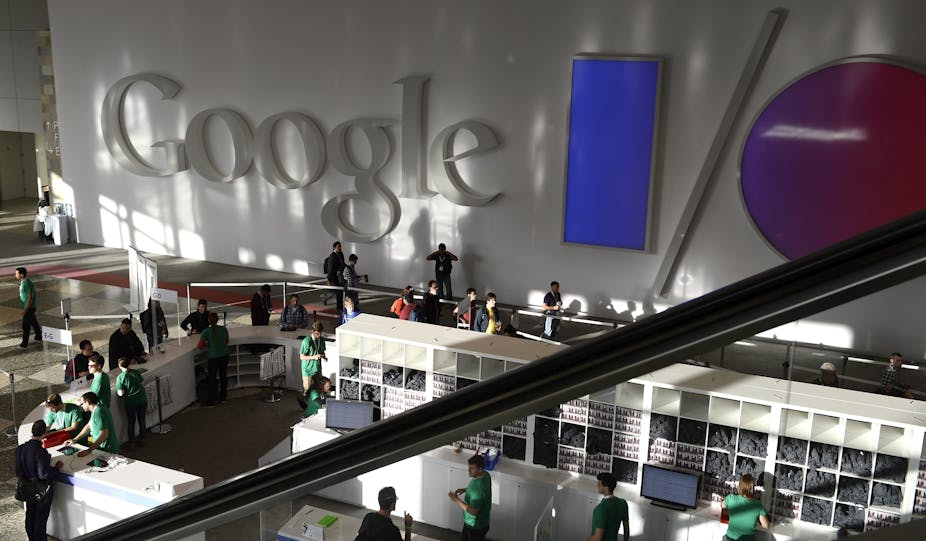Yesterday saw the end of the first day of Google’s three-day developer-focused conference Google I/O in San Francisco. And for consumers, there was plenty on offer.
The annual Google fest is popular - tickets for this year’s conference, at a whopping US$900, sold out in 49 minutes.
It features sessions on building applications with Google and the company’s popular open-web technologies such as Google Chrome.
In addition, many new Google developments are unveiled.
Yesterday’s three-hour keynote speech drew to a close with a question-and-answer session with Google’s CEO Larry Page, who brought some very exciting updates for Android developers and general users.
While a number of commentators have jumped on a Samsung Galaxy S4 smartphone “Google edition” and new software development tools, there were plenty of interesting - and useful - features in there for the rest of us.

So, from the keynote, I’d like to highlight five key things that will potentially change the way people work, think and interact with computers.
The emphasis of natural interaction with Google search
When senior vice-president Amit Singhal took to the stage, he said:
The search of the future will need to answer, converse and anticipate.
He said this while announcing Google’s new Chrome-based voice search – a “virtual assistant” in the mould of Siri, the iPhone’s voice-activated helper.
You’ll be able to sit back, say “OK Google” followed by a question into your computer’s microphone, and Google will answer you. It’s completely voice-activated - no need to type or click anything.
This paves the way for voice-activated interactions with Google Glass – the company’s forthcoming, and heavily publicised, “smart glasses”. Such interactions were demonstrated throughout the event.
New features in Google+
As part of an overhaul to its social networking service Google+, launched in 2011, the keynote introduced Auto Awesome, an upgraded online photo system.
Every photo uploaded through Auto Awesome will be enhanced automatically – including skin softening. The move could (and will) be seen as a response to Instagram, the hugely popular photography app, bought by Facebook for US$1 billion last year.
There are several other bells and whistles. If the photos you upload appear to be a panoramic series, they’ll be merged into a panoramic photo, automatically.
Updates to Google Maps
Google Maps has become more interactive. Clicking on a map focuses on that location and gives you handy tips, such as the best way to get there.
It will also make “smart recommendations” for you which, as with most Google products, become tailored the more you use it.
New tools for Google Play developers
Does using location-based services such as Maps drain your phone battery? A new fused location provider, which uses WiFi, GPS and cell tower sensors in a phone, will use 1% of the battery power used previously.

In addition, the new “Activity Recognition” application programming interface, using a phone’s in-built accelerometer, will enable apps to recognise if users are driving, walking, or biking in very battery-efficient, no-GPS method.
That’s good news for the 900 million Android activations as of 2013.
A smarter virtual assistant that anticipates our needs
We can set up reminders within the company’s Google Now search app to nudge us at “the right time” for our appointments, and highlight information that affects our movements (such as public transport service closures). It will also recommend “content” we might like, including upcoming TV shows and video games.
Ay, there’s the rub!
In a perfect world, there would be no “but” to these new developments. But it will come as little surprise that these new services and smartness come at the cost of giving away our personal information.
What we like and dislike, who our networks are, how we spend our days, and our patterns of daily activities will be of great value to our virtual assistants and our smartphones – but also to the people pulling the strings.
Was it ever thus? Yes, probably – but the more personalised such services become, the more of our privacy we surrender in return.

